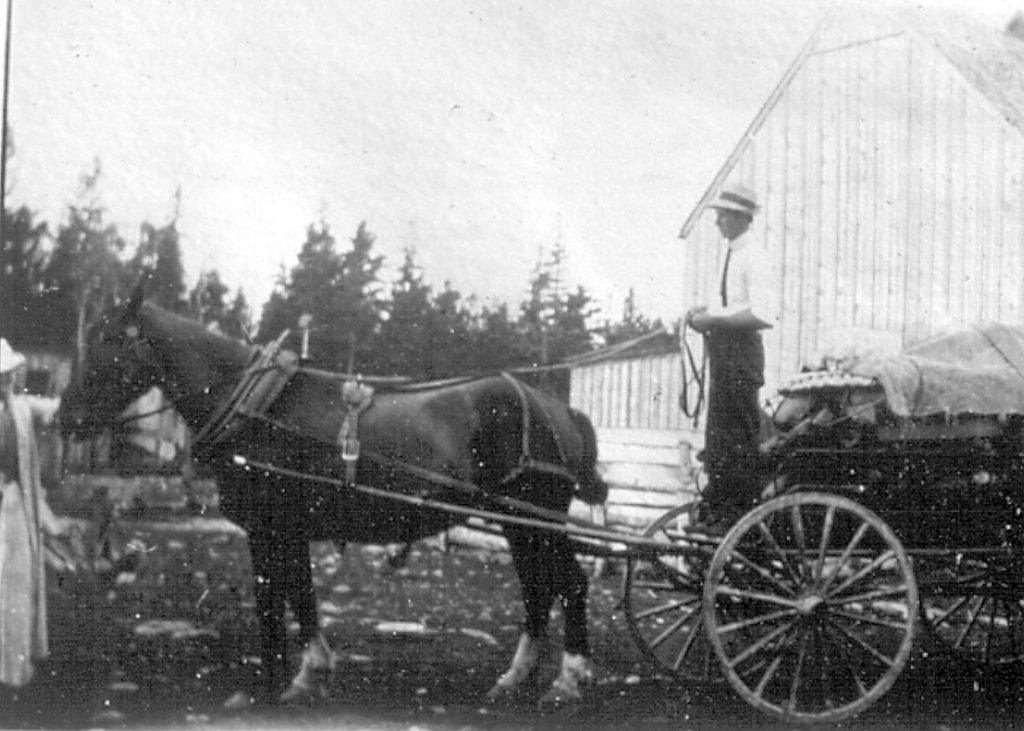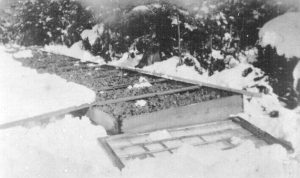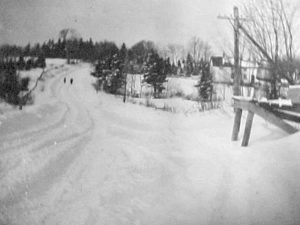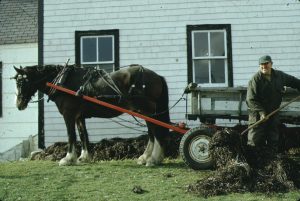Cole Harbour Expands

Seymour LaPierre stands on his “Express Wagon,” loaded with items that are possibly for market. [19-?]. Joyce (Langille) LaPierre Album. CHRHS Archives.

Hot beds on the Stuart Harris Farm in Cole Harbour, Nova Scotia. 1940. Melvin Harris Album. CHRHS Archives.
The population to the east of the Cole Harbour estuary and along the Eastern Shore was also growing, although not as rapidly. People from the Eastern Shore with business in Halifax usually travelled to the city by sea. Travelling by land, they walked or rode the long miles necessary to get around the expansive waters of the Cole Harbour salt marsh. The road was still largely impassable for wheeled vehicles. Ox carts might be used locally, at certain times of the year, but generally didn’t venture far.

The view west up Cole Harbour Road in the winter, looking at Beck’s Hill, with Thomas Bissett’s farm on the right and the Beck farm on the left. [19-?]. Photographs from Cole Harbour residents album: Series unidentified. CHRHS Archives.

Wilfred Bissett banks his house with eel grass for the winter. 1973. Rosemary Eaton fonds. CHRHS Archives.
Eel grass (Zostera maritima), which grew abundantly in the waters of Cole Harbour, found many uses, especially as insulation in the walls and around the foundations of local homes. As well, the seaweed that washed up after a storm was much sought after as a fertilizer. Access to the beach was limited by poor roads, but in time, dozens of farm wagons would descend on the gravelly bar to gather seaweed. The intense competition resulted in complaints that some farmers were taking excessive amounts of this sea manure to the detriment of others. Provincial legislation was passed to forbid its removal before sunrise. Farmers adapted by lining up on the beach in the pre-dawn gloom ready to begin loading their wagons at daybreak.

